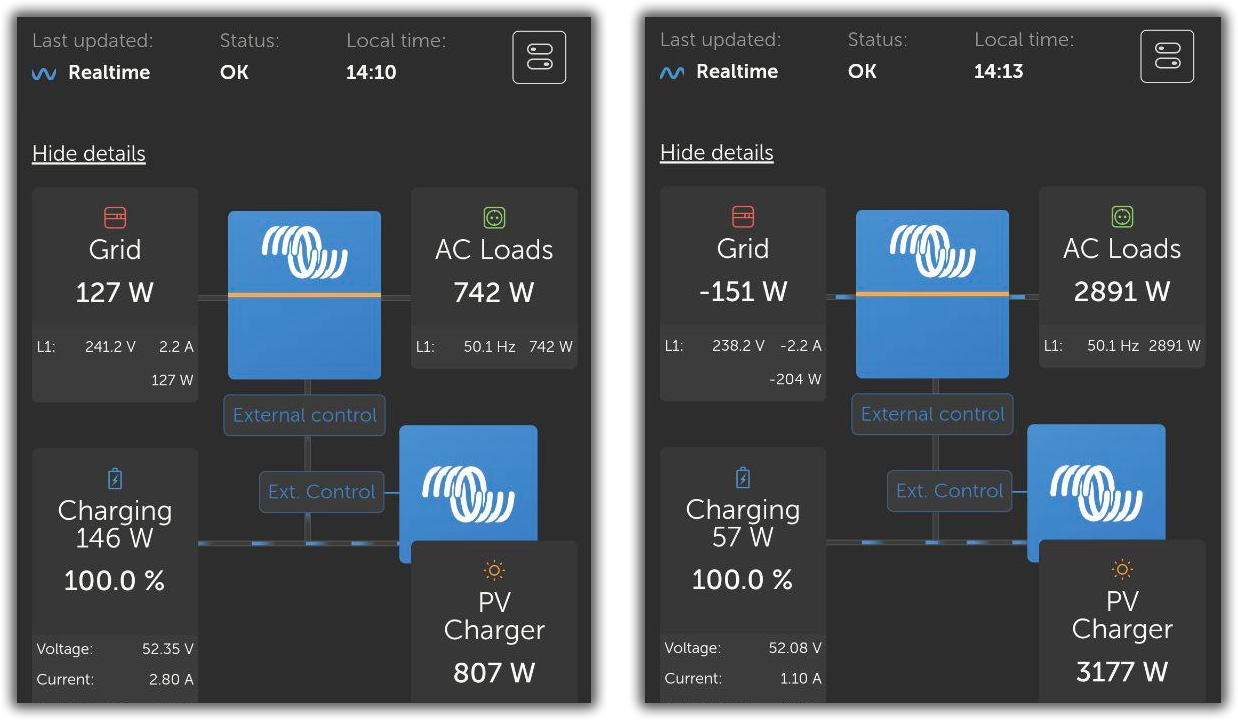Hi, I have a Victron system just setup (2 x Multiplus II, parallel) and I am confused about if this system is feeding into the grid or not?
I do NOT want to feed energy back into the grid, but I am not sure if it's configured correctly.
This is what I see. The Grid 'block' is alternating between positive values and negative values:
Then it's 127W (meaning taking from the grid. )
The next moment it's -151W, (meaning feeding into the grid.)
Is this correct for a system that's supposed to never feed into the grid?

It has ESS installed.
I'm also confused about why it is taking power from the grid when the sun is up and solar is generating more than enough to power the loads (and the battery is at 100% SoC).
It's my idea (and wish) to ONLY take from the grid when there is no sun and battery drops to 20% SoC. Only then take from the grid.
Please advise,
Mike
